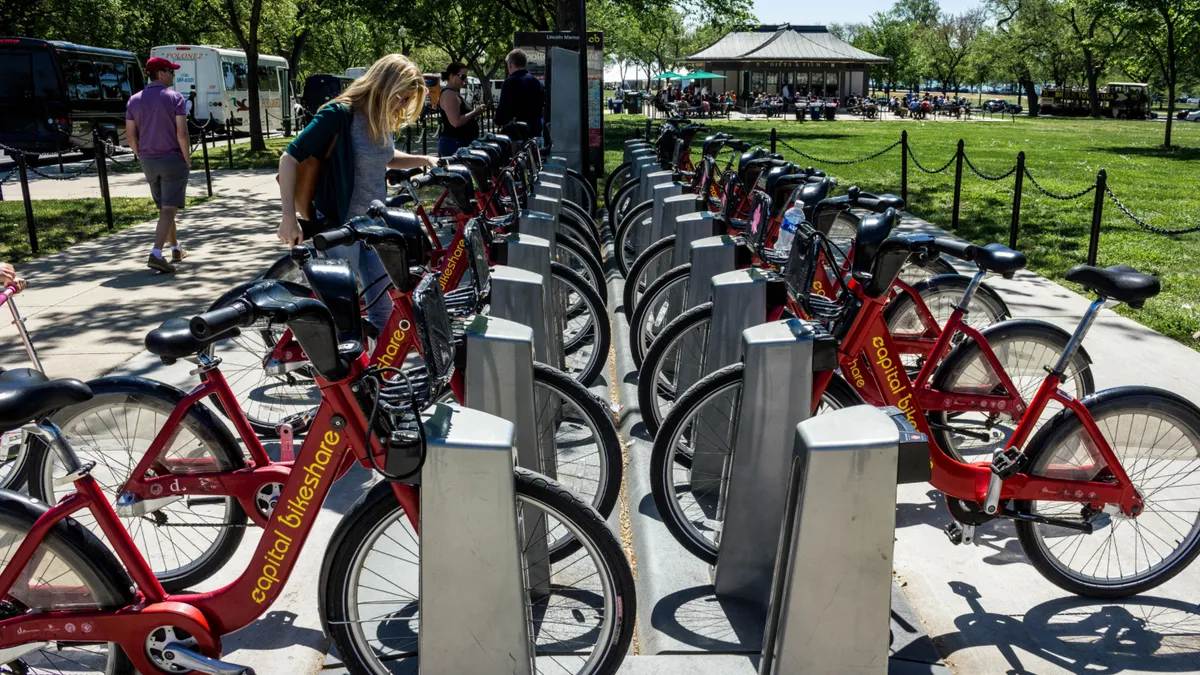Dive Brief:
- Introducing bike-share to a city correlates with an increase in light and heavy rail ridership, but a drop in bus ridership, according to a study from researchers at the University of Kentucky.
- The study found a 1.8% decrease in bus ridership. In addition, heavy rail ridership experienced a decrease of 1.3% per year after ride-hailing services entered a market, while bus ridership saw a decrease of 1.7% per year. But the data found that bike-share had a positive effect on subway ridership, increasing it by 6.9%, and light rail ridership saw an uptick of 4.2%.
- The study examined data from 2002-2018 in seven large U.S. cities: Boston, Chicago, Denver, Los Angeles, New York City, San Francisco and Washington, DC. It primarily relied on data from the National Transit Database as well as supplementary data from the U.S. Census Bureau's American Community Survey.
Dive Insight:
The study points out that a number of factors should be considered when evaluating transit ridership decline, including income growth, increased car ownership and service cuts or reliability issues with transit. All of those factors also were emphasized in a recent report, indicating transit ridership is dropping but riders could be won back.
The study noted bike-share programs are relatively new in cities, and their emergence coincides with the greatest dip in transit ridership. Biking could compete with transit ridership, or it could add first-mile/last-mile transportation options. The study says "it would be reasonable to expect a similar effect from the introduction of electric scooters or similar new modes."
Knowing how bike-share programs affect public transit ridership allows transit agencies to develop programs and marketing which caters to specific audiences. For example, the survey results indicate bike-share complements heavy rail, so transit agencies could devise marketing campaigns specifically for those users and increase messaging at bike-share depots. Understanding the breakdown of how the introduction of a bike-share program affects each type of transit — rail vs. bus — allows further catering to target populations.
Transit agencies also could form partnerships with bike-share service providers that have the potential to boost transit ridership, such as offering discounts to bike-share users who originate or terminate trips at a transit stop. Similarly, agencies could partner with ride-hailing services for discounts and collaborative programs for rides to and from transit stops.












